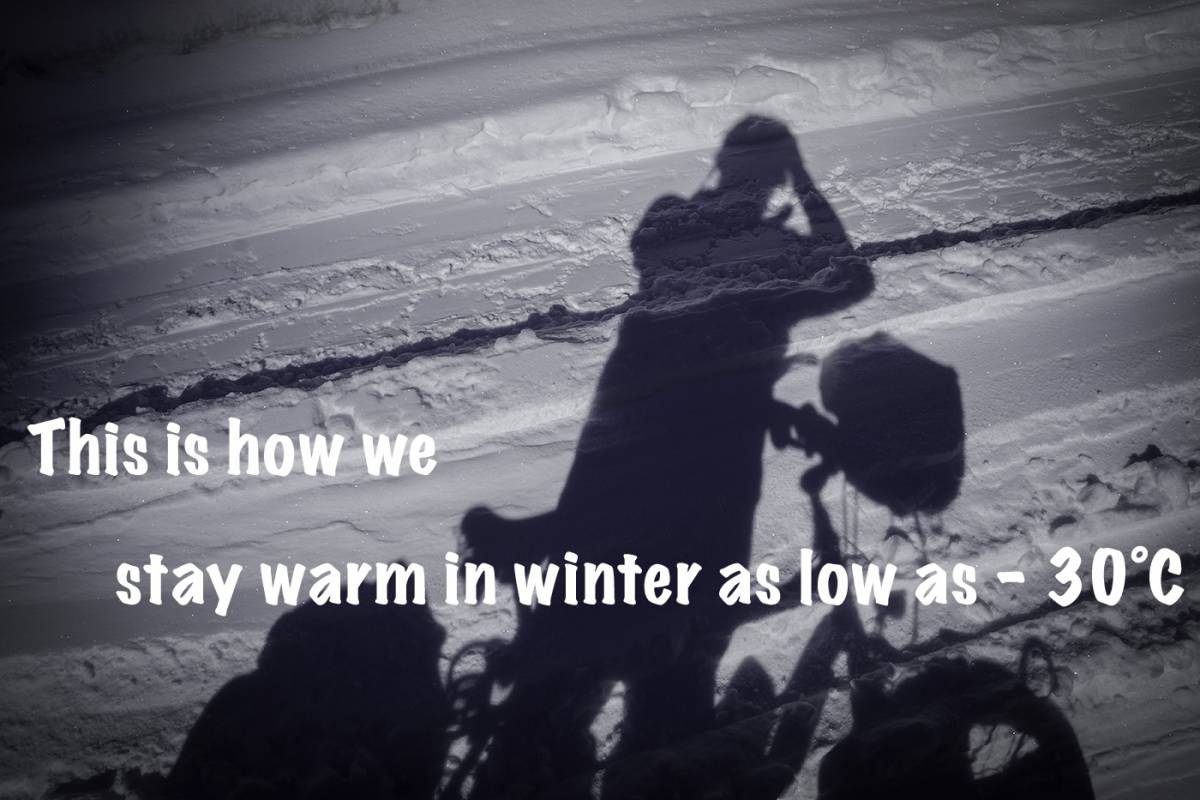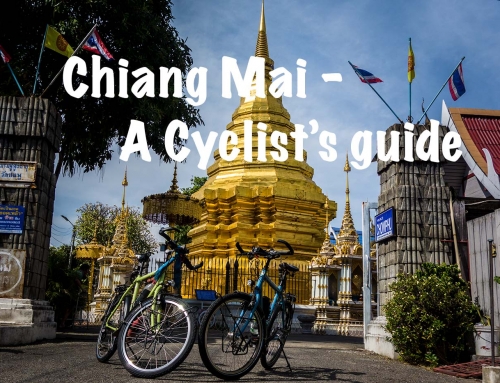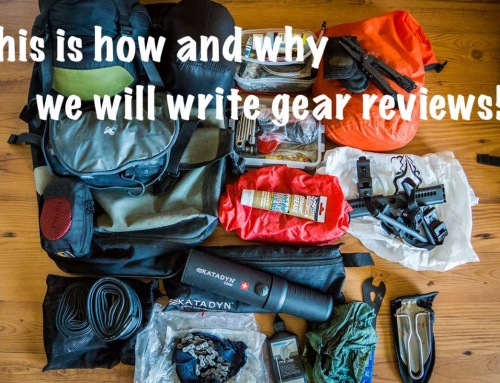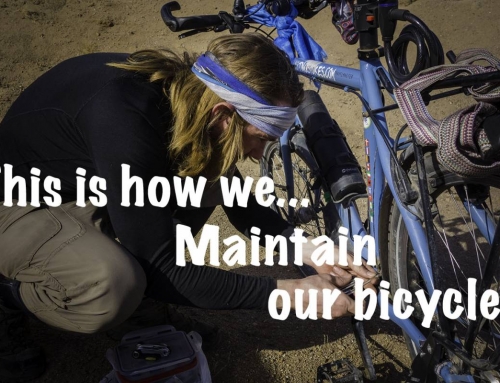‘This is how we stay warm in winter as low as – 30°C’ is a part of the series “This is how… by twistingspokes.com”. While cycling in winter sounds scary and cold, it can be a wonderful experience! We cycled off from home in the Netherlands during winter and crossed over the Alps before we got spring in Italy. In Central Asia and Mongolia we had a really hard winter. It was here where we learned the most about winter cycling and how to stay warm in winter as low as – 30°C.
So, we knew already before we left for the journey that we would have to deal with some cold temperatures along the way. We expected temperatures as low as – 15°C. This was the temperature we had used to rate our gear and clothing.
Previously Martin had some winter experiences and being born in Scandinavia a natural connection to winters. Whereas Susanne never really enjoyed winter, nor had a natural feeling about the cold. So we had a good mix of experience levels, but this did not stop us from cycling during the winter months.
The European winter was an all time soft winter and the coldest nights were -10°C and during the day 2-5°C whereas when we reached the Pamir mountains of Tajikistan in late autumn we had our first -20°C night. It was at 4200m altitude just before the highest pass at 4655m the Ak-baital. We kept on heading north into Kyrgyzstan and Kazakhstan where we were confronted with snow before we reached China and the dry cold of Mongolia was a final adventure for Martin.
These experiences have taught us a few lessons on how to stay warm in winter as low as – 30°C and this we would like to share. Below we have some tips or pointers on how to manage cycling in the winter.
Maybe it is obvious that you need to prepare yourself and the equipment needed for cycling in the winter. We have met and read about people being caught by surprise of the weather and suffered some cold cold cycling days. So please be prepared! For our clothing system we love the system of layers and have used this system in most situations. This counts for the whole body from feet to hands. Did we like cycling in winter? Most of the time: yes! This was due to the clear skies and fresh air and an extra layer to our adventure. As the story goes Susanne tried her best and decided it was not for her after experiencing camping at -25 degrees for two weeks. She took a train from China and Martin cycled to Ulaanbaatar. Still we look back at the winter as a real experience for life for both of us! While cycling we learned never to get too warm as you start to sweat and this will freeze up and keep you very cold for a while (which can be fatal). If cold and you have your clothing right, think of water and food as the body burns a lot more calories in the cold. Then cycle a bit harder. If still cold seek shelter or dress up. Enjoy the surroundings and be happy! This helps you stay warm and calm. We especially enjoyed a warm lunch when possible, to find a small local place to eat. People are in general more welcoming as they know how cold you are and offer you tea of a place to stay for the night. Cycling in the cold below -10°C the body is stressed and starts burning more energy. When this is happening you also generate some stress in the mind due to stress hormones and the situation. Always listen to your self and slow down when needed. This is stressful and can be dangerous so staying clear and calm can be vital. When hypothermic people sometimes feel warm and start undressing which is the reverse of what you should be doing so keep an eye out for yourself. We felt more stressed when stopping to camp and also the limit of daylight is stressful. It gets very cold when the sun sets. Stay safe and calm makes it more fun! You should be more aware of food and water in the winter as you need more energy. We ate a great deal more than normally. We would carry Snickers and other snacks close to the body so it would not freeze up. Then you would think eat dried fruits or nuts, but even these contain some water and will be hard as rocks. So have snacks on the body and replace as you eat them. Crackers are fine in the cold and can be carried in the panniers. Water freezes up within hours so have a thermal flask and pack water in your panniers. We even carried water on the body in a dromedary bag. Use snow for cooking and prepare water for the day of cycling. Be aware that boiling snow will take time and use more fuel. Eat more and stay healthy is the key to success 🙂 We would usually set up camp in the dark with our head lamps as light. We would set the tent and prepare for cooking. As the tent porch is just big enough for cooking we would some times cook in the tent or on the edge. When Martin was alone he had more space and always cooked in the tent. To have some warmth in the tent we used candles in one of our pans for safety. Getting up in the morning is hard so the faster the better and getting a warm breakfast helps a lot 🙂 Many people plan their trips to avoid certain seasons while traveling by bicycle. We have cycled Iran in summer scorching heat and Ramadan, while ending up in Mongolia during their winter. The more extreme seasons usually provide special circumstances and we have been very happy to experience winter from Tajikistan through to Mongolia. The skies have been beautiful and the survival methods of the people have been very interesting to see. It is not for the faint of heart and it requires a considerable amount of effort, but it is possible and enjoyable!Preparation
Clothing
Cycling
Body and Stress
Food and Water
Camping
Camping












Thanks for commenting! It was really cold in minus 30. We had a warm core because of cycling but still hands and feet go numb and Martin lost some feeling in his hands when he was alone. The pogies are the best though! Although hand and toe warmers could also work for a short period of time.
Interesting blog post. I’ll be sure to come back to this page if I’m ever comtemplating anything this crazy. I live in the tropics and don’t like being cold, It takes my energy away. I wonder if i were doing your trip, if i would just have much longer days in camp than on the road cycling so that i could avoid the difficulties of getting up, thereby reducing the daily quota of pain and suffering. I do’nt like having to get up in the dark. Once or twice would be ok but not every day.
Martin!
Wonderful pictures of the cold lands but -30 is too much for me.
Take care
Emilio
Uhf! This looks so cold! I’m nervous about 0 degrees coming up in Turkey, but -30 degrees! Good on both of you for trying it out. My hands get really cold while cycling, so I always make sure to toss in a few hand and toe warmers when I know we’ll be cycling through the cold. Thanks for these helpful tips!
I think if your hands are getting cold you need to add more warmth to your core, as well as having good gloves. I was recently in the alps in Japan and although it was nowhere as cold as the above, it was raining all day and my feet did not get cold, nor my hands. My feet were totally wet and i had puddles in my shoes but with non expensive wools socks with nylon coating and garment hiking shoes, they were great – though i didn’t really relish them being wet. On my hands i had seaskins waterproof gloves or thinsulate gloves and winter cycling gloves. I did not like the sealskins gloves that much because they were hard to get off and on when wet.